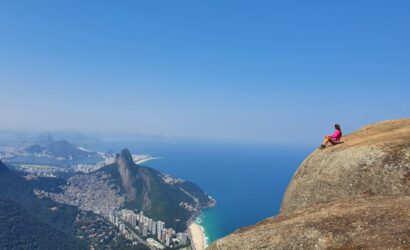Trekking to
Gávea
Stone
Talking a little about
Pedra da Gávea is the largest seaside rock in the world. Its name comes from its resemblance to the crow’s nest of a mast (called “gávea” in Portuguese), which was very traditional on Portuguese ships. The hike is intense and long, ideal for those who engage in extreme sports. The most critical point is the “Carrasqueira,” a steep rock where you need to use your hands and feet to climb.
Region
Southeast
Type of tours
Full day tour
Climate
Atlantic tropical
Include
Guide, (optional transfer)

Some
Curiosities
Pedra da Gávea boasts an impressive altitude of approximately 844 meters (2,769 feet) above sea level, making it one of the highest rock formations in the city of Rio de Janeiro. It offers spectacular views of the city and the Atlantic Ocean.
Scaling Pedra da Gávea is a challenging activity that requires climbing experience and knowledge of the trails. The trail to reach the summit is steep and rocky, and climbers face technical sections, such as the “Carrasqueira,” an almost vertical rock wall.
From the top of Pedra da Gávea, visitors can enjoy spectacular views of Christ the Redeemer on Corcovado and other iconic landscapes of Rio de Janeiro. It is a popular spot for taking panoramic photos of the city.
The origin of the name “Gávea” dates back to the early Portuguese explorers who arrived in the region. It is believed that the mountain was named due to a perceived resemblance to the prow of a ship, known as “gávea.”
Pedra da Gávea is also known for its historical and archaeological significance. Pre-Columbian artifacts, including inscriptions and petroglyphs, have been discovered in the area, suggesting that the mountain held cultural importance for indigenous peoples who inhabited the region before the arrival of Europeans.






